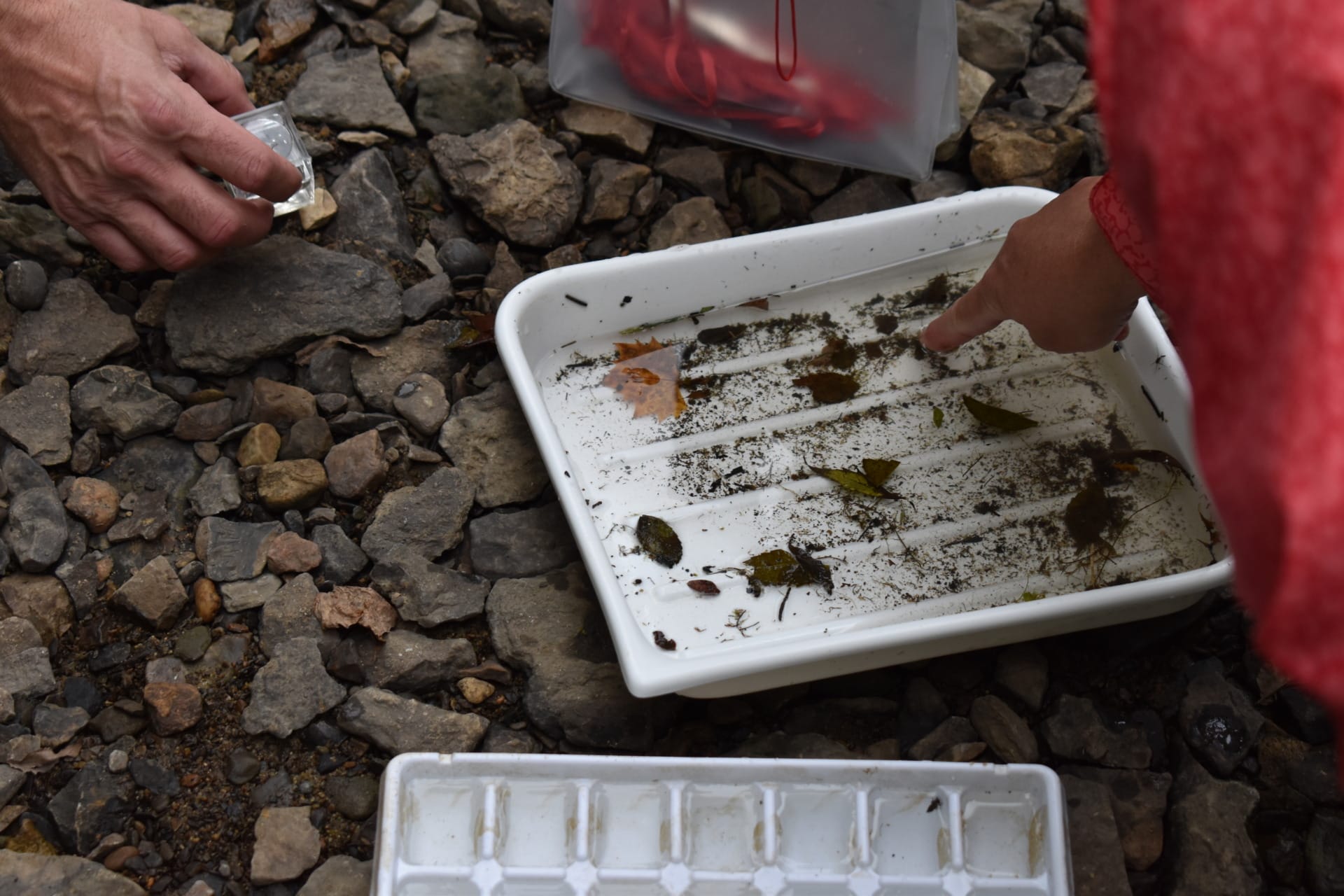A new policy brief from the United Nations argues that citizen science is crucial to global water security
Published in Flatland October 18th, 2024 at 10:01 AM; authored by Julie Freijat (jfreijat@flatlandkc.org)
Ground and surface water are facing increasing threats from pollution and climate change, and scientists need help. Citizen science, which is done by non-professional scientists, is part of the solution, according to the report. And it’s happening throughout the Midwest.
Hinds himself doesn’t have a scientific background. Prior to retiring, he worked for years in graphic design, but always wondered what it would have been like had he chosen biology instead. Now, Hinds volunteers with MST, which trains people like him to evaluate water quality in Missouri streams. “Being that I always loved, as a kid, going out and playing in the stream — I thought ‘Well this will be fun,’” Hinds said.
Participants in the program learn how to measure water chemistry and identify benthic macroinvertebrates, which are animals visible to the naked eye that don’t have spines and live at the bottom of waterways. Worms, snails and dragonfly larvae are a few types of macroinvertebrates.

Hinds monitors two sites in Kansas City with other volunteers. Along with counting macroinvertebrates and measuring water chemistry, the volunteers also evaluate stream discharge — or the flow of the stream — and do a visual survey of the stream.
Jim Hinds is a citizen scientist in Missouri, and part of his work involves shuffling around streams and picking through insects to identify what is living in the water. All the data he collects is written down and sent off to the Missouri Stream Team, a citizen science program from the Missouri Department of Conservation. There are thousands of miles of streams in the state of Missouri, and not enough scientists to monitor them all, Hinds said.
Hinds said he still has to use cheat sheets when testing water chemistry, which includes comparing the stream water to the general water quality standard for metrics like dissolved oxygen and temperature. Malcolm DeBroeck, volunteer education and citizen science assistant at MDC, said that while science can be intimidating, volunteers learn a lot in the field.
The organization uses the term “citizen science” to describe the work they do, said April Sevy, volunteer education and citizen science coordinator at MDC. Other terms for this kind of science are used by different individuals and organizations, Sevy said, such as community science, c-science, or participatory science.
Citizen science can provide scientists with large amounts of data that can help inform their research. For instance, the Missouri Stream Team program provides state scientists with baseline data that measures stream quality across Missouri over a long period of time. Craig Fuller, a fisheries biologist at MDC, uses this data in his own work. “I am always looking for ways to collect more information,” Fuller said.

Citizen science has grown over the last few decades, particularly as digital technology has advanced. For instance, online social network iNaturalist, which provides people with the tools they need to identify and track animals and plants in their communities, has seen an increase of over one million users since last fall.
